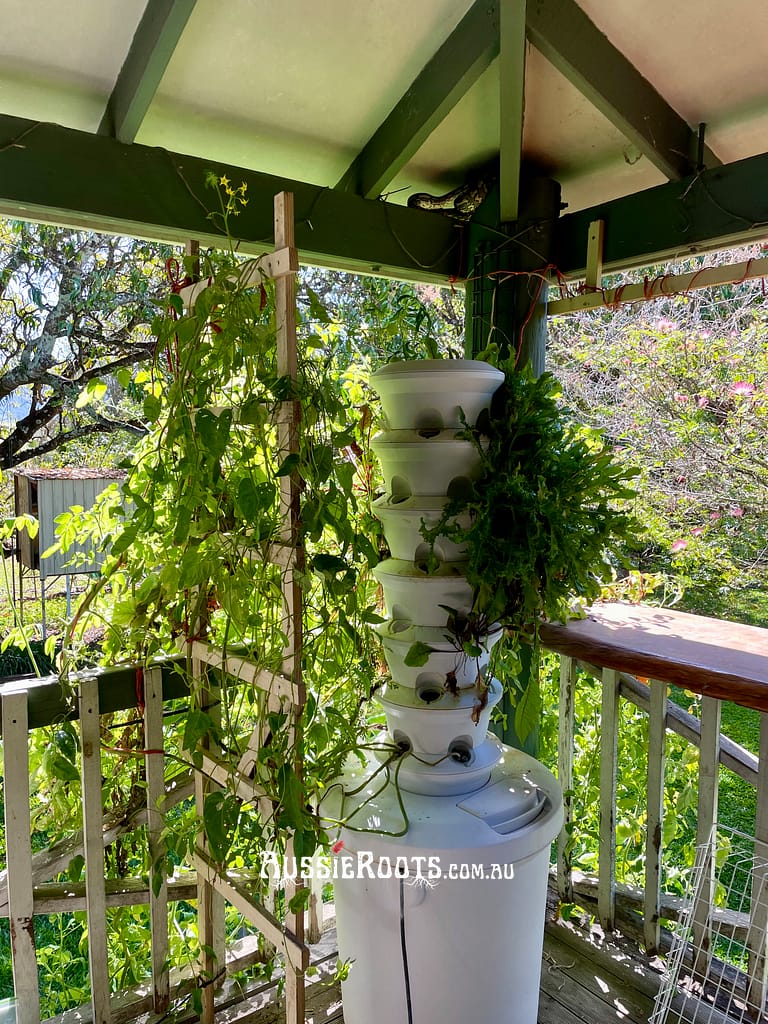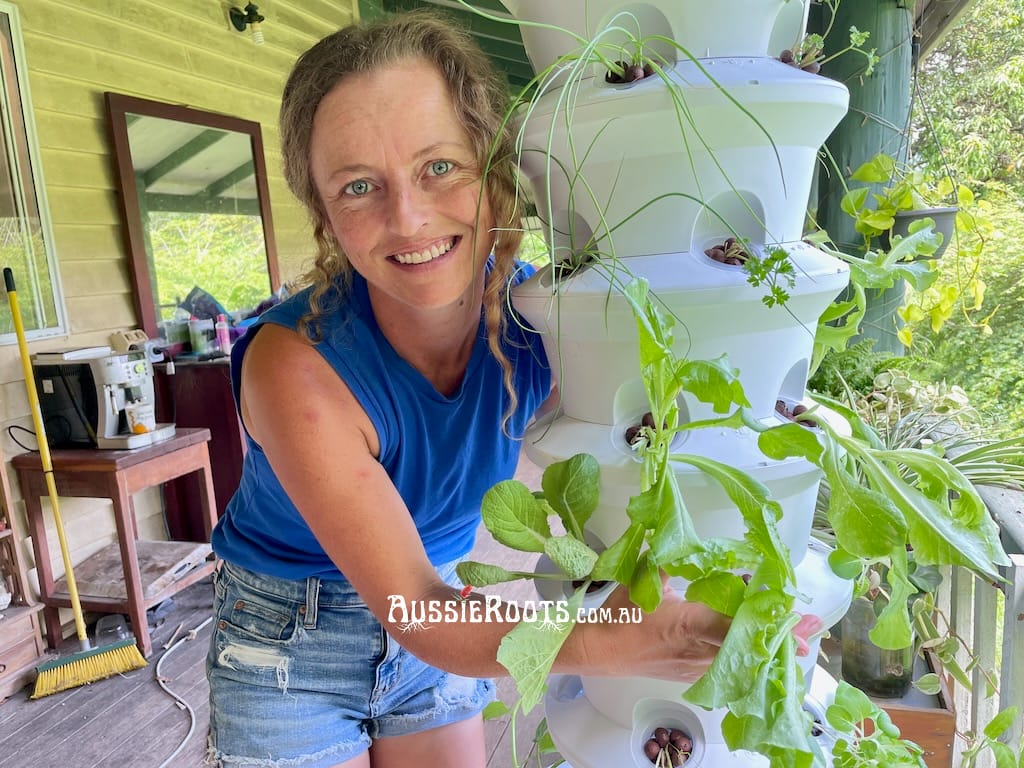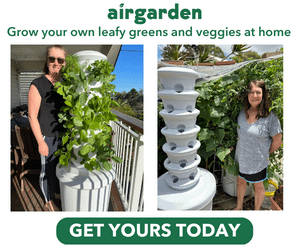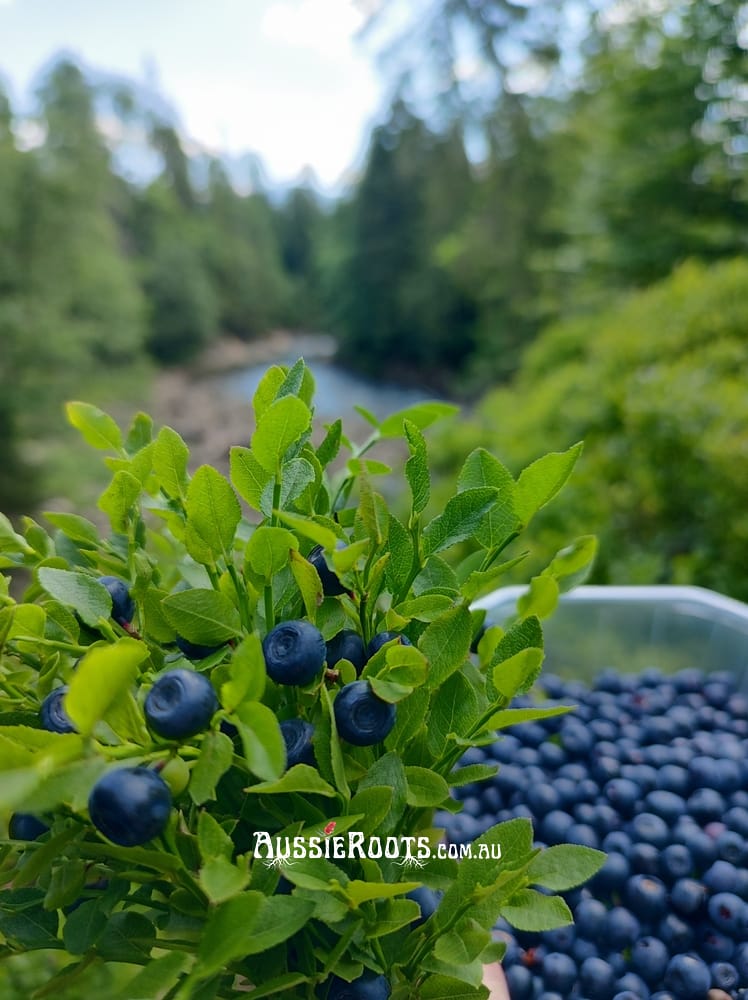My Airgarden Review – Australia’s Aeroponic Tower Garden
Have you ever imagined picking fresh, homegrown food right from your veranda or patio without worrying about chemicals or pesky critters? The Airgarden is making that possible for urban and small-space gardeners across Australia.
It’s a sleek, easy-to-use aeroponic system designed to grow up to 30 plants in just 1m² of space. After using it for a while, I’m ready to give you the lowdown on how it works, what I’ve learned, and whether it’s worth the investment.
What is the Airgarden?

The Airgarden is an aeroponic tower system. It’s designed for urban spaces where traditional gardening is tough, or for people like me, who deal with garden-raiding wildlife! It stacks plants vertically, uses 90% less water than soil-based gardening, and grows plants 3x faster.
What really sets it apart is that it’s self-watering and self-fertilizing, making it low maintenance. Even if you’ve never gardened before, this system takes care of the hard stuff. It’s perfect for balconies, verandas, or even small backyards, and it’s also mobile, thanks to built-in lockable wheels.
How Does Aeroponics Work?
Aeroponics is all about growing plants without soil. Instead, the Airgarden uses a mist of water and nutrients to feed the plants’ roots, which are suspended in the air. This setup allows for maximum oxygen exposure, which helps the plants grow faster and healthier. It also makes the system incredibly water-efficient—using up to 90% less water than traditional methods.
The nutrient-rich water is pumped from the reservoir at the base of the system and trickles down through the plants, feeding them with everything they need. This system not only grows plants faster but also uses space more efficiently by stacking them vertically.
My Airgarden Setup and First Impressions
Living in rural Queensland, I was skeptical at first. The weather here can be brutal on a garden, and the wildlife loves to snack on anything edible. But when I saw the Airgarden on sale, with free shipping, I decided to take the plunge. It arrived in just four days by courier, which was impressive considering my location.
When I unboxed it, I was impressed by how modern and sturdy it looked. We nicknamed it “The Tower of Power” because it just looks like something from the future! Setting it up was incredibly simple – no tools required. The entire process took about an hour, from attaching the wheels to stacking the tower.
The Airgarden comes with everything you need:
- Reservoir (80 liters)
- Grow cups and grow plugs
- Two-part nutrient solution
- pH testing kit
- Timer
- Pump
- Seeds and a propagation kit
What Can You Grow?

The Airgarden can grow up to 30 plants at a time, and there are over 150 plant varieties to choose from. I started with a mix of lettuce, herbs, and Kang Kong.
While the lettuce struggled in the heat (it bolted almost immediately), the Kang Kong thrived, along with tomatoes, rocket, zucchini, and cucumbers. If you’re looking for salad alternatives, greens like endive, dandelion, and microgreens also do well in this system.
My Personal Growing Experience

Despite the ease of setup, growing with the Airgarden has been a learning curve. Sprouting seeds in the coir pellets (which the Airgarden recommends) has been tricky. The seeds can be slow to sprout, and transplanting soil-grown seedlings into the system didn’t work as well as I hoped. I’m planning to try transplanting into coir pellets instead to see if that makes a difference.
Insects have also been a bit of a problem – specifically fruit flies and cabbage moths. The Airgarden has a pest net you can buy, but I felt it limited the growing space. Next time, I’ll try covering the whole system with an insect net.

How Much Does It Cost?
The initial investment for an Airgarden is $799, and there are payment plans available, like $249.67/month for three months interest-free. If you’re serious about growing your own food, it’s definitely worth considering.
Here’s a breakdown of the ongoing costs:
- Nutrients: After 6 months, you’ll need to restock. A 5 litre bottle of nutrient solution (part 1 and 2) costs around $99.
- pH Adjusters and EC meter: You don’t need these, but it makes life a LOT easier. They’re $99 each.
- Seeds or Seedlings: You can grow your own seedlings in coir pellets or buy ready-to-plant ones from Airgarden (though they’re currently working on securing a new supplier for the latter). You can also try transplanting soil-grown seedlings into clay balls, or into the coir pellets.
- Electricity and Water: Surprisingly minimal. I spent about $30 over six months.
The great thing is that Airgarden claims the system pays for itself in under 6 months, thanks to the value of the produce you can grow. Based on their estimates, the system yields around $2,328 worth of produce per year, with ongoing operating costs of about $325.
Day-to-Day Maintenance
One of the best parts of the Airgarden is how low maintenance it is. Each week, I spend about 10 minutes checking the water levels, adding nutrients when needed, and trimming back any roots that are growing too long.
Here’s my weekly routine:
- Check the water level in the reservoir. During summer, surprisingly, it hardly ever needs refilling. We figure this is probably due to the extreme humidity. In the cooler months, I check at least twice a week.
- Adjust pH levels and nutrients as needed. It’s essential to keep the pH around 6.0, so I test the water regularly.
- Inspect the plants for any pests or disease.
- Prune roots that may be dipping into the reservoir.
Once every couple of months, it’s a good idea to empty and clean the system. This helps keep it in good condition and ensures the pump and nutrient flow work as they should. I’m a little embarrased to say I haven’t given mine a good clean yet! This is on my agenda for summer, when the weather gets challenging anyway.
Additional Accessories

While the Airgarden comes with most of what you need, there are a few optional accessories worth considering:
- Pest Net: Great for keeping bugs at bay, but it can limit growing space.
- LED Grow Lights: Ideal if you want to grow indoors or if your outdoor space doesn’t get much sunlight.
- Water Heater: If you live in a colder area, this keeps the reservoir at an optimal temperature during winter.
Shipping costs can be a bit high, especially for those of us in rural areas, so it’s worth buying in bulk when restocking supplies like nutrients.
Is the Airgarden Worth It?
After using the Airgarden for a few months, I’m convinced it’s a great investment for anyone wanting to grow their own food, especially if you’re short on space. The upfront cost may be daunting, but with the money you’ll save on groceries and the satisfaction of eating your own homegrown produce, it pays off.
Pros:
- Fast plant growth (3x faster than soil)
- 90% less water used than traditional gardening
- Minimal maintenance (10 minutes a week)
- Compact design, perfect for small spaces
- Great return on investment in under 6 months
Cons:
- High initial cost
- Seed sprouting can be tricky
- Shipping and accessory costs add up
- Insect issues, especially without a pest net
Overall, if you’re looking to live more sustainably, reduce your grocery bills, and have fun growing your own food, the Airgarden is a solid choice. Just be prepared for a few learning curves along the way – and maybe rethink growing lettuce in the Queensland heat!















